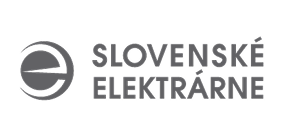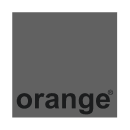
Each week, we bring you 5 stories that resonated the most in our internal Slack channel #AI-news. We write the newsletter using various AI tools because we're an AI company and our marketing wants to move with the times too. 😎
Today you're reading the 64th issue in a row.
#1
Meta introduces Llama 4 models, surpassing Google and OpenAI in benchmarks 🧠📊!
Meta has unveiled Llama 4, claiming its models outperform Google and OpenAI in key benchmarks 📊. Llama 4 Scout, which fits on a single Nvidia H100 GPU, outperforms Google Gemini 3 and Mistral 3.1 ⚡💻. Llama 4 Maverick competes with GPT-4 and Gemini 2.0 Flash, utilizing fewer parameters (individual elements used by the model for learning and predictions) 🧩🔧.
The upcoming Llama 4 Behemoth, with 288 billion active parameters, promises to surpass GPT-4.5 in STEM tasks (science, technology, engineering, and math) 🔬.
The new "mixture of experts" architecture enhances efficiency by activating only the necessary parts of the model for specific tasks ⚙️. While Meta labels the model as open-source, its license requires permission for commercial entities with over 700 million users, raising questions about its true open-source nature 🔒. More details will be revealed at LlamaCon on April 29 📅🌐.
#2
$40 billion investment from Microsoft and SoftBank boosts OpenAI’s valuation to $300 billion 💻💡!
OpenAI has secured $40 billion in funding, marking the largest investment ever received by a private tech company 💰🚀.
This investment values the company at $300 billion, placing it among the top private companies in the world, just behind SpaceX and TikTok’s parent company, ByteDance 📊.The funding came from SoftBank ($30 billion) and a group of investors, including Microsoft 💻💡.
OpenAI plans to use these funds for advances in AI research and to scale its infrastructure 🧠. The deal also includes a condition that OpenAI must transition to a for-profit organization by December 31, which could impact its future funding 💵🔄. With 500 million weekly ChatGPT users, OpenAI is poised for further expansion 🌟.
#3
Trump's new tariffs could disrupt AI chip production and pricing 🖥️🔧.
New tariffs from President Trump have caused a drop in the stock prices of semiconductor companies like Nvidia, TSMC, and AMD 📉💻. Starting April 9, the U.S. will impose a 34% tariff on imports from China and 32% on imports from Taiwan 🇨🇳🇹🇼, which could raise the price of AI chips, potentially impacting the demand for GPUs used in AI servers 🖥️⚡.
However, some analysts believe that companies working on Artificial General Intelligence (AGI) will continue purchasing these chips, even if prices rise 🤖. TSMC, which manufactures some of the world’s most advanced semiconductors, may be particularly affected, as it supplies major U.S. companies like Nvidia and Apple 🍎💻.
While it’s unclear whether the tariffs will bring more chip production to the U.S., it’s expected that importing chips from Taiwan and China will become more expensive for companies 💸🌍.
#4
Microsoft celebrates 50th anniversary and introduces new features for AI assistant Copilot 🎉🤖.
Microsoft is celebrating its 50th anniversary by rolling out new features for Copilot, its AI assistant 🎉🤖. The assistant now remembers personal details, such as birthdays, helps with presentations 📊, and can even book services 📅.
It’s designed to simplify and streamline life by being proactive 💡. This move keeps Microsoft competitive in the AI space, where companies like OpenAI and xAI are leading ⚔️🧠.
Copilot also now personalizes recommendations, such as podcasts 🎧 and shopping suggestions 🛒, adding value for everyday users 👩💻💡. With these updates, Microsoft is not just creating a tool but improving AI intelligence and making it more helpful in daily life 🌍💪. What do you think 🤔?
#5
New tariff calculation resembles AI recommendations, raising concerns about AI-driven policy 🧠💡!
Trump's new trade policy uses a controversial tariff calculation that closely aligns with the formula recommended by AI chatbots, such as ChatGPT 🧠💡. This formula involves dividing the country’s trade deficit by its exports to the U.S., and then halving the result 📉. Economists have criticized this approach for being overly simplistic and potentially harmful to global trade 🌍💼.
Chatbots like ChatGPT, Gemini, Grok, and Claude all suggested similar formulas to balance the trade deficit, with some even recommending halving the tariff to achieve a "reasonable" result 💡📊. While it's unclear whether the White House used AI for this decision, the striking similarity between their formula and chatbot suggestions raises concerns about AI-driven policy 🤖🏛️.
Although the chatbots warned that real-world trade dynamics are far more complex, that didn’t stop the U.S. from proceeding with its plan 🇺🇸📈. Now that the tariffs have taken effect, the world is watching to see how they will impact the global market and trade relations 🌍📉. What do you think 🤔?











